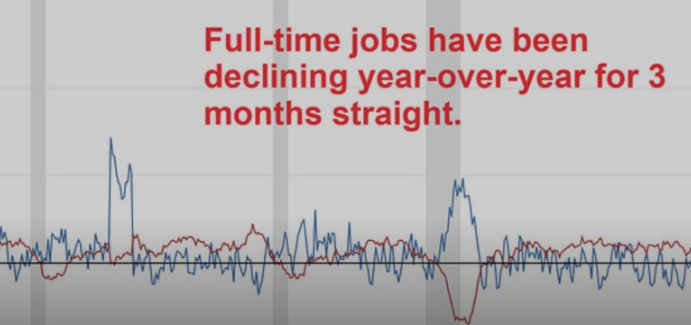The Biden Admin has been caught lying about the job market for years now. They keep getting busted soon after exposure, but they keep playing Soviet propaganda games, hiding the truth from the American public.
The U.S. economy is showing signs of weakness in its most critical growth driver, the American consumer, just as the job market begins to soften heading into the second half of the year. Consumer spending is a pivotal component of U.S. economic growth, directly tied to the services sector, which comprises around two-thirds of GDP annually. Inflation, therefore, remains a central focus for Federal Reserve policymakers, politicians, and company leaders nationwide because when consumers reduce spending in the face of higher prices, the impact is widespread.
Over the past three years, several factors have fueled consumer spending gains: a resilient job market, billions in government stimulus, changing work patterns, and a post-pandemic growth surge in the world’s largest economy. This has created a virtuous cycle of low unemployment, with the longest stretch under 4% since the late 1960s, solid retail sales, an economy that has avoided recession despite multiple Fed interest-rate hikes, and a stock market that continues to reach record highs.
Consumers are now out of excess savings
Hitting the lowest level in 5 years
This could get ugly pic.twitter.com/DrxMn4jhGM
— Game of Trades (@GameofTrades_) June 18, 2024
However, cracks in this growth foundation are starting to appear. While this may give the Fed ample reason to consider cutting rates in the fall, it could challenge the current market consensus for a soft landing of the economy, characterized by tamed inflation and no recession. The Commerce Department’s May retail sales report showed only a modest gain of 0.1%, with the headline figure of around $709 billion remaining largely flat since last December.
Moreover, downward revisions to the March and April retail sales tallies and the control-group reading that feeds into GDP calculations are raising concerns about a potential slowdown in the coming months. Chris Zaccarelli, chief investment officer for the Independent Advisor Alliance in Charlotte, remarked, “Light retail sales may be good news for inflation hawks, but it could be the beginning of a slowdown in growth, which would hurt a lot more than a couple of interest rate cuts would help.”
US consumer feels pain:
1) 38 MONTHS OF INFLATION ABOVE 3%
2) SLOWING GDP GROWTH AT 1.3% IN Q1
3) MEDIAN HOME PRICES AT ALL-TIME HIGH OF $434K
4) $2 trillion deficits
5) $34.8 tn NATIONAL DEBT – record6) 1.5 MILLION Americans lost a job in 6 months 👇https://t.co/aBnhvZ4VI6
— Global Markets Investor (@GlobalMktObserv) June 19, 2024
The combination of factors that previously supported consumer spending, such as a strong job market and government stimulus, may be losing momentum. This slowdown could have broader implications for the economy, as consumer spending plays a crucial role in driving growth. The Fed’s response to these emerging signs of weakness will be critical in determining the economy’s trajectory.
Key Points:
i. Consumer Spending Slows: The U.S. economy is seeing a decline in consumer spending, a critical driver of economic growth, with retail sales showing only a modest 0.1% gain in May.
ii. Job Market Softness: The job market is displaying initial signs of weakening, contributing to concerns about the overall economic outlook.
iii. Economic Growth Concerns: Downward revisions in retail sales for March and April, coupled with a flat headline tally for May, indicate a potential slowdown in economic growth.
iv. Potential for Fed Rate Cuts: The slowdown in consumer spending and economic activity may prompt the Federal Reserve to consider cutting interest rates in the fall to support the economy.
v. Inflation and Recession Risks: While the slowdown could help tame inflation, it raises concerns about the possibility of a recession, challenging the current market consensus for a smooth economic adjustment.
Fallon Jacobson – Reprinted with permission of Whatfinger News



